As an investor, you place your money in a business proposition with the expectations of profits. Some utilize profits as it accrues, while others use the profits to expand. Unlike new business models that permit investors to scale up businesses, investment in commercial properties leaves investors with limited options.
The investor has very little flexibility in gaining access to cash for expansion plans, to put it differently. This makes it necessary for investors to look at legally permissible options to raise funds. This is where commercial cash-out refinance investors dip into funds based on the property value.
What is Cash-out Refinance?
It allows the investor to hold on to the property while still being able to withdraw an amount equal to the payment made at the time of investment.
Here is a little primer to help you understand the nuances behind commercial cash-out refinancing. This will help you make an informed decision when it comes to raising funds or availing an additional investment opportunity for the expansion of your holdings.
A diverse investment portfolio is always the best bet to stay safe in a volatile situation. Various market influences and factors determine the success of investments, and it pays to have a mixed set of investments that will balance out market fluctuations.
All about Net Operating Income
Before you venture out into the various facets of commercial cash-out refinancing, it is essential to have a good NOI (Net Operating Income). Without understanding NOI, you will not be in a position to work out the finer details of the refinancing of commercial properties. The straightforward explanation of NOI is the income generated by any property.
The detailed description of NOI involves computations of various expenses and income related to the property. The formula used by the industry to determine NOI is pretty simple – the gross income minus the operating expenses is accepted to be the NOI.
This again involves various components such as the sum of the potential income from the property, the notional/actual losses resulting from non-occupancy, and losses attributed to credit. In other words, the total income minus the total expenses and loss of income will fetch the NOI value.
A property with a positive NOI is considered a good investment and will determine the amount of funding raised. For instance, if the total amount received/receivable is more than the total expenses towards the property, it is a good choice. There are two different ways of looking at NOI: the computation of data from the past, and the other is the projections. This depends on the status of the property.
Remember, the NOI does not take into consideration taxes or financing-related costs associated with the investor. It is specifically related to the particular property’s operating income and expenses and is never about the investors’ expenses or income.
Simple methods to work out the NOI of a property
Calculate the NOI of a property is important to form a refinancing perspective. Here is how you can quickly get the right NOI of your property.
The first component that you need to work out is the potential rental income, which is effectively the total rent that you receive or that you expect to receive. This is under the assumption that your property enjoys 100% occupancy. The next component is the loss of income as a result of non-occupancy.
The property may comprise multiple units that can be rented out, but as a result of the non-occupancy of certain units, you will be experiencing a loss. Similarly, it is also possible that some tenants default on rental payments, and this could affect your income.
This calculation can only be used when the property is actually rented out, as it would be tough to assume vacancy/payment default-related losses.
The most important component for calculating NOI is the effective rental income, which effectively receives the actual rental income. This refers to the actual income after the deduction of vacancy/payment default-related losses.
Properties fetch income in multiple methods. It is possible to monetize the property through billboard rental space or parking. This income is typically not calculated as a part of the rental income. The sum of all income will give you the gross income, and the sum of all the expenses will give you the total operating expenses. Deduct the expenses from the gross income, and you have the NOI.
How to get the most out of a commercial property refinance
Now that you have a good idea of NOI, it is time to look at how you can use refinancing to your advantage. The amount that you have put in as investment on a property essentially remains locked. You may be earning rental income from the property, but rental income is always a small percentage of the acquisition costs.
The average income that you can expect as a rental from any property is around 7% of the property’s total costs. This is not a standard, but the average expectations from historical data. This will not match the down payment made on the property and will certainly not help you expand your holdings.
If you are content with the rentals and do not wish to expand, refinancing is unnecessary. However, if you are interested in the opportunity to invest in other properties, then you need to extract the equity from the existing property and use it as an investment for the next property. This will give you the added advantage of holding on to your property while using the funds that you initially invested in putting in elsewhere.
This requires making changes to your operating model and bringing in a change to the rental model. For instance, as the property value increases, you need to proportionately increase the property’s rental. You could also opt for transferring certain costs to the tenant, thereby reducing your monthly operating expenses. This will help you get better NOI from the property.
When the property’s present valuation is taken into consideration and compared with the value of the property at the time of availing the mortgage, you will find a difference in the value. This will enable you to opt for a cash-out refinance, which can then be used for expanding your holdings.
The amount that you can mop up from the refinance entirely depends on how you have sorted out the NOI for better income. Better income from the property will help you extract more equity from the property, which can then be used judiciously.
Points to remember when leveraging NOI for refinancing
Increase your holdings and investment portfolio by prudently managing your NOI and extracting equity from the property through a cash-out refinance. Certain components cannot be used when working out the NOI of a property. For instance, possessions depreciate year on year, and this is more of an accounting component. You do not spend money when the value depreciates.
However, the value reduces, which cannot be used as an input when you work out the NOI. Similarly, taxes that you pay in your capacity may not be related to the property and therefore, cannot be used as input for calculating the NOI.
Certain calculations depend on the lender and may actually differ from one institution to the other. For instance, a fund that is created to meet emergency expenses is taken into consideration by some lenders when you work out the NOI. On the same note, certain lenders do not take the amount into consideration.
Therefore you need to ascertain the components used as inputs by lenders to understand if your calculations match those of the commercial real estate hard money lenders. Your expectations and the actual amount that you receive depend on how your calculations and those of the lender are aligned.






